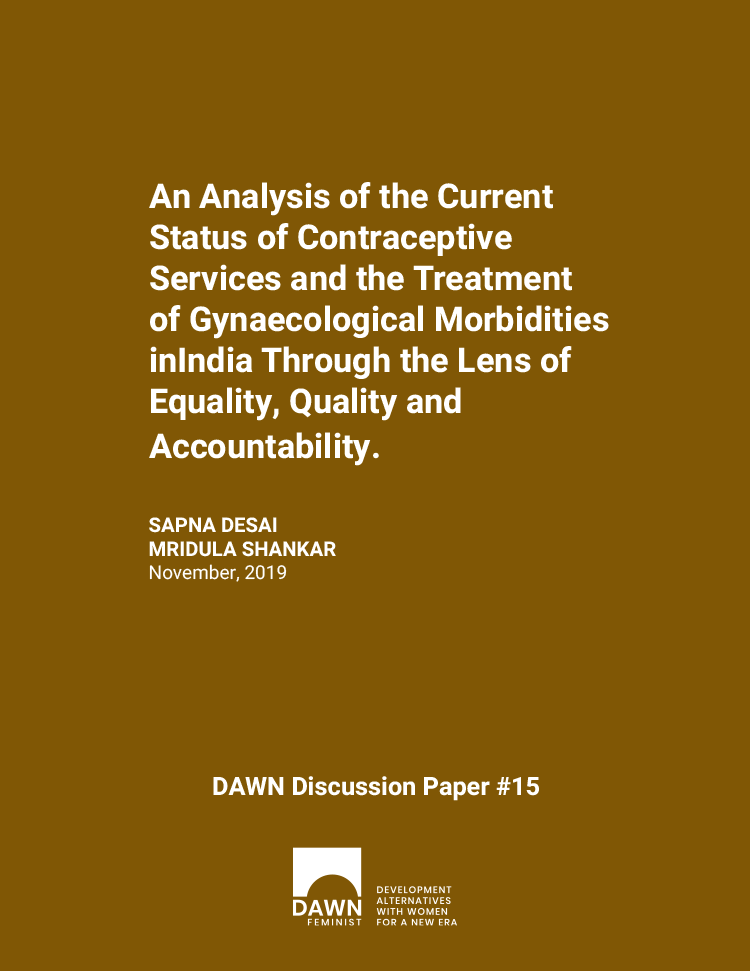Introduction
As a signatory to the Programme of Action at the 1994 International Conference on Population and Development (ICPD) in Cairo (United Nations 1994), the Indian government made important commitments to the sexual and reproductive health and rights (SRHR) of its citizens. This was a turning point in India’s ideological approach to population and development, which till then had been shaped by concerns around rapid population growth and comprised mostly of investments in family planning to the exclusion of other sexual and reproductive health (SRH) concerns. In the twenty-five years since ICPD, the country has witnessed economic and health sector reforms that have had mixed results on progress made towards the ICPD agenda. For instance, the country’s public spending on health remains amongst the lowest in the world, contributing to the emergence of a large unregulated private sector (Balarajan et al. 2011). While policies have emphasised a comprehensive approach to reproductive health, deficiencies in health financing, alongside changes in the global health agenda in the early 2000s have guided investments in some (maternal health, HIV/AIDS, and to a lesser extent family planning) but not all of the “core” reproductive health services specified in the Cairo Programme of Action, leading to an imbalance in service provision. Therefore, while maternal mortality has fallen by nearly 50 per cent between 1990-2015, (Kassebaum et al. 2016) abortion service provision in the public sector remains inadequate, (Stillman et al. 2014) the contraceptive method mix is still heavily skewed towards female sterilisation (International Institute for Population Sciences – IIPS/India and ICF 2017), and gynaecological morbidities have received negligible programmatic attention (MoHFW 2018).
In this case study, we analyse two elements of SRH services—contraception and gynaecological morbidities—through the lens of equality, quality and accountability (EQA). While SRH is much broader, the focus on these two specific components is intentional. Contraceptive/family planning services has been a policy and programmatic priority in India for at least six decades. However, the processes and pathways through which fertility has been reduced have neither explicitly protected nor promoted human rights, nor till recently paid adequate attention to quality of service delivery (Koenig et al. 2000). In 2012, India committed to achieving a target of an additional 48 million contraceptive users by 2020 at the London Family Planning Summit (Government of India 2014). This commitment has been translated into action through new programmatic initiatives such as scaling up post-partum IUD services, and the addition of injectables within the public-sector delivery system. Such a renewed focus provides an opportunity for a critical assessment of contraceptive services using a lens of EQA, with a view to providing recommendations that can help make progress towards a rights-based approach to care.
While maternal health and birth control occupy a central place in wider development discourse, there is little recognition of the health needs of women outside of reproduction or beyond their reproductive years. In India, gynaecological morbidity causes considerable burden on women’s health. For example, women have a similar lifetime risk of dying of cervical cancer (in the absence of any other disease) as in pregnancy (Dikshit et al 2012). A range of research over the past two decades indicates a considerable burden of gynaecological morbidity, but policy has largely addressed such concerns on the fringe of programmes for maternal health or family planning. As a result, services are largely unavailable at the primary level, despite the Cairo consensus on the inclusion of diagnosis and treatment of reproductive tract infections as an essential service for women. In this case study, these morbidities are defined to include three groups of symptoms and/or ailments: reproductive tract infections/sexually transmitted infections (RTI/STIs); menstruation-related morbidities and irregularities; and cervical cancer, including its precursor symptoms. This case study takes the view, aligned with the ICPD consensus, that women’s gynaecological morbidities are a critical part of reproductive health services that must be provided and monitored as an indicator of progress towards sexual and reproductive health and rights.
1.1. Approach
This case study aims to provide an overview of the current status of these two aspects of SRHR in India, followed by an analysis of service provision and fulfilment of sexual and reproductive rights through the lens of EQA and concluding synthesis. Equality is operationalised across demographic characteristics such as location, socioeconomic status, education and other available data. Empirical data on status of family planning use and gynaecological morbidities is drawn primarily from the fourth round of India’s National Family Health Survey (2015-16). We focus on national data and some state-level variation in this case study as a first step, while noting (i) the importance of state-level analysis to account for wide variation in epidemiologic burden and health systems across India (Dandona et al 2017); and (ii) that health is a state subject in India’s federated structure; advocacy requires both national and state-level evidence to influence changes in policy and service provision. Throughout this case study, we present a birds-eye view of the quality of services—inclusive of availability/comprehensiveness; accessibility and affordability—through synthesis of available community-based/facility-level research and monitoring reports. Lastly, we examine accountability through an overview of existing legal and institutional frameworks, along with the role of civil society actors. The case study concludes with observations on advances, challenges and opportunities with respect to SRHR and the SDGs in India.

